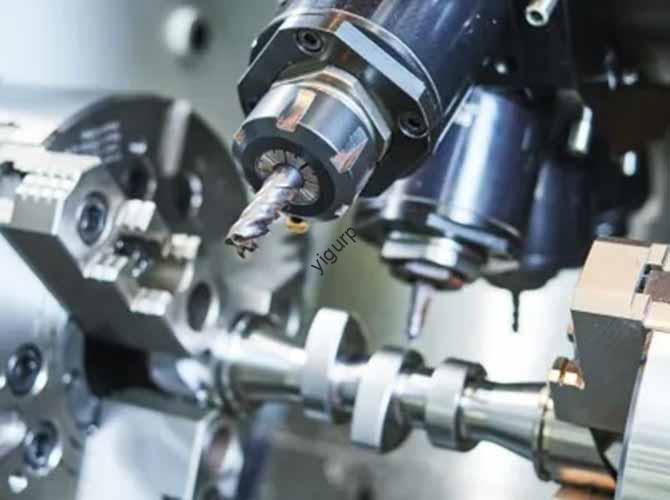Cuando se trata de CNC aluminum machining, even small adjustments to parameters can mean the difference between a flawless part and a wasted workpiece. Whether you’re a seasoned operator or a factory manager looking to optimize production, understanding how to fine-tune key parameters is critical. This guide breaks down the core CNC aluminum processing parameters with actionable data, comparaciones, y consejos prácticos para resolver desafíos comunes.
1. Core CNC Aluminum Processing Parameters: Definición & Optimal Ranges
The four most influential parameters—velocidad del huso, profundidad de corte, tasa de alimentación, yselección de herramientas—directly impact machining efficiency, acabado superficial, and tool life. Below is a clear breakdown of each, with industry-proven ranges for aluminum alloys (P.EJ., 6061, 7075):
| Parámetro | Definición | Common Range for Aluminum | Key Impact Factor |
|---|---|---|---|
| Velocidad del huso | Rotational speed of the tool (measured in RPM) | 3,000–12,000 rpm | Machine spindle type (BT30/BT40/BT50) & tool material |
| Profundidad de corte (DOC) | Thickness of material removed per pass | 0.5–5mm | Workpiece tolerance & tool rigidity |
| Tasa de alimentación | Distance the tool moves per minute (measured in mm/min) | 1,000–3,000 mm/min | Velocidad de corte & aluminum alloy type |
| Material de herramienta | Material of the cutting tool | Carburo > Acero de alta velocidad | Resistencia al desgaste & machining efficiency |
2. How to Set Spindle Speed: Avoid Tool Wear & Poor Finish
The spindle speed determines how fast the tool cuts through aluminum—but “faster” doesn’t always mean “better.”
Consideraciones clave:
- Machine Spindle Limitations: A BT30 spindle (common in small CNC machines) typically maxes out at 10,000 Rpm, while a BT50 spindle (for heavy-duty machining) may cap at 6,000 Rpm. Exceeding these limits risks spindle damage.
- Tool Material Impact: Herramientas de carburo (the most popular for aluminum) handle higher speeds (8,000–12,000 rpm) than high-speed steel (HSS) herramientas (3,000–6.000 rpm).
Ejemplo: Por un 6061 aluminum part using a carbide end mill and BT40 spindle, set the speed to 8,500 Rpm. This balances efficiency and tool life—going to 12,000 RPM would cut cycle time by 20% but reduce tool life by 35%.
3. Profundidad de corte (DOC): Balance Efficiency & Tool Load
Why does DOC matter? A too-deep cut strains the tool, causing vibration and rough surfaces; a too-shallow cut wastes time.
Step-by-Step DOC Selection:
- Check the workpiece’s required thickness: If you need to remove 10 mm of material, split it into 2–3 passes (P.EJ., 5 mm → 3 mm → 2 milímetros) instead of one 10 mm pass.
- Match DOC to tool size: A 10 mm diameter end mill can handle a 5 mm DOC, Pero un 3 mm diameter end mill should max out at 1.5 mm DOC to avoid breaking.
- Test with a scrap piece: Before machining the final part, test the DOC on a small aluminum scrap to check for vibration.
4. Tasa de alimentación: The Link Between Speed & Calidad de la superficie
Feed rate is like the “pace” of the tool—too fast, and the part deforms; demasiado lento, and costs rise.
Common Feed Rate Mistakes & Corrección:
| Error | Symptom | Arreglar |
|---|---|---|
| Feeding too fast (encima 3,000 mm/min) | Workpiece bends or has burrs | Lower to 2,500–2,800 mm/min |
| Feeding too slow (bajo 1,000 mm/min) | Long cycle times; tool overheats | Increase to 1,200–1,500 mm/min |
| Ignoring alloy type | Uneven surface finish | Use 1,000–1,800 mm/min for 7075 (más difícil) VS. 1,800–3,000 mm/min for 6061 (más suave) |
5. Tool Selection for CNC Aluminum Machining: Carbide vs. HSS
Aluminum’s tendency to “stick” to tools makes tool choice critical. Let’s compare the two most common options:
| Característica | Herramientas de carburo | Acero de alta velocidad (HSS) Herramientas |
|---|---|---|
| Resistencia al desgaste | Excelente (lasts 3–5x longer than HSS) | Pobre (needs frequent sharpening) |
| Speed Compatibility | Alto (arriba a 12,000 Rpm) | Bajo (máximo 6,000 Rpm) |
| Costo | Higher upfront ($20–$50 per tool) | Lower upfront ($5–$15 per tool) |
| Mejor para | Producción de alto volumen; tolerancias apretadas | Small-batch jobs; simple cuts |
Para la punta: Choose carbide tools with alarge rake angle (15°–20°). This reduces cutting force and prevents aluminum from adhering to the tool’s edge.
6. Yigu Technology’s Perspective on CNC Aluminum Processing
En la tecnología yigu, Hemos apoyado 500+ manufacturers in optimizing CNC aluminum machining. De nuestra experiencia, 70% of quality issues stem from mismatched parameters—e.g., using a high feed rate with a shallow DOC. We recommend pairing ourYigu CNC spindle units (BT30/BT40 models) con herramientas de carburo: our BT40 spindle’s stable 10,000 RPM output, combined with a 15° rake angle carbide tool, cuts cycle time by 25% while keeping surface roughness (Real academia de bellas artes) abajo 0.8 μm. For small-batch users, our HSS tool kits (pre-sharpened for aluminum) reduce setup time by 40%.
Preguntas frecuentes: Common Questions About CNC Aluminum Processing Parameters
- q: Can I use the same parameters for 6061 y 7075 aluminio?A: No. 7075 es más difícil, so lower spindle speeds (6,000–8,000 rpm) y tasas de alimentación (1,000–1,800 mm/min) are needed, en comparación con 6061 (8,000–12,000 rpm; 1,800–3,000 mm/min).
- q: How do I fix vibration caused by deep cuts?A: Reduce the depth of cut by 30%, increase spindle speed by 10%, or use a tool with a larger diameter (P.EJ., switch from 6 mm a 10 Mm End Mill) for more rigidity.
- q: When should I choose HSS tools over carbide?A: HSS is better for small-batch jobs (menos que 50 regiones) or simple cuts (P.EJ., agujeros de perforación), as it’s cheaper upfront. Para la producción de alto volumen, carbide’s longer life saves money.
